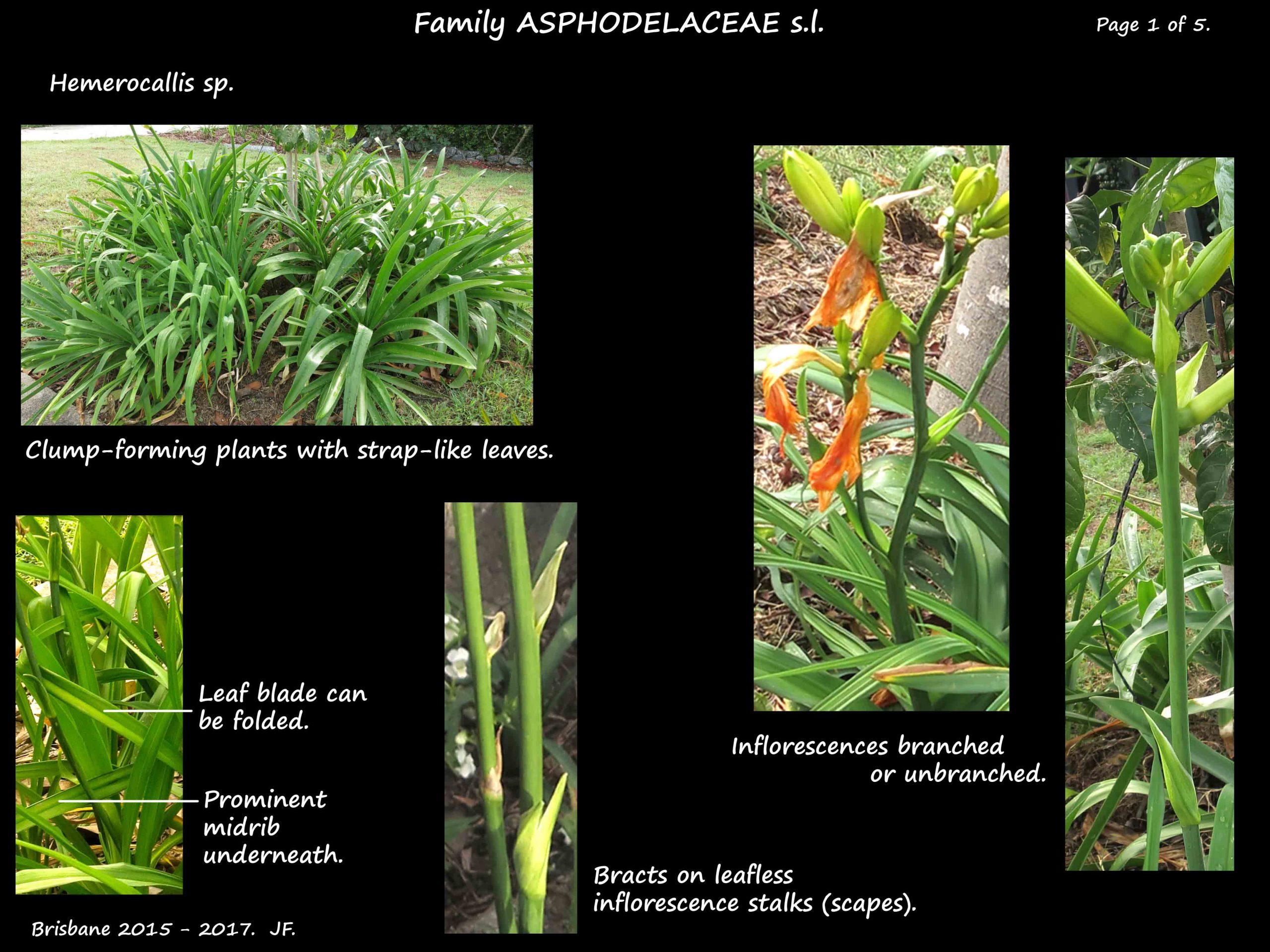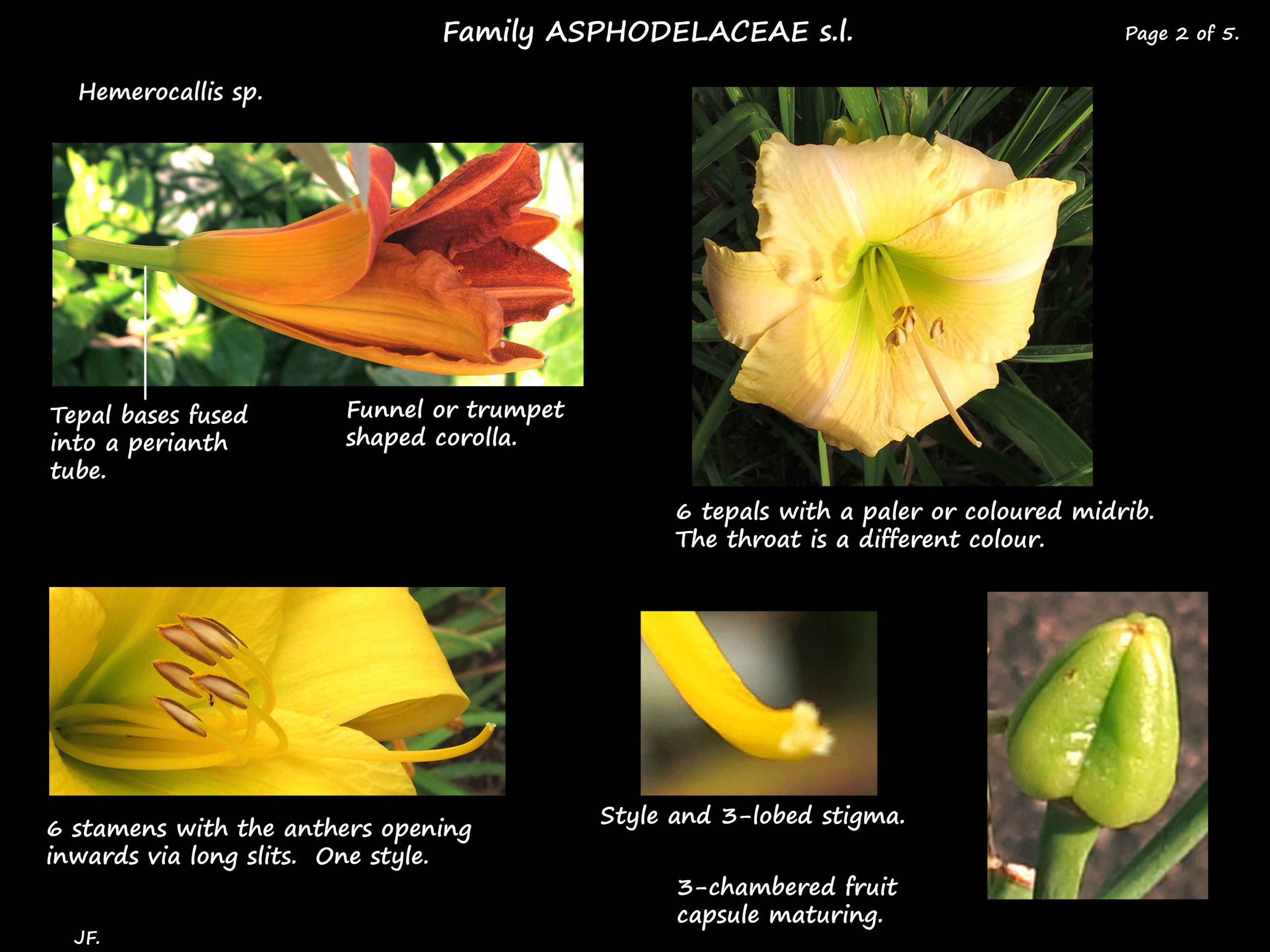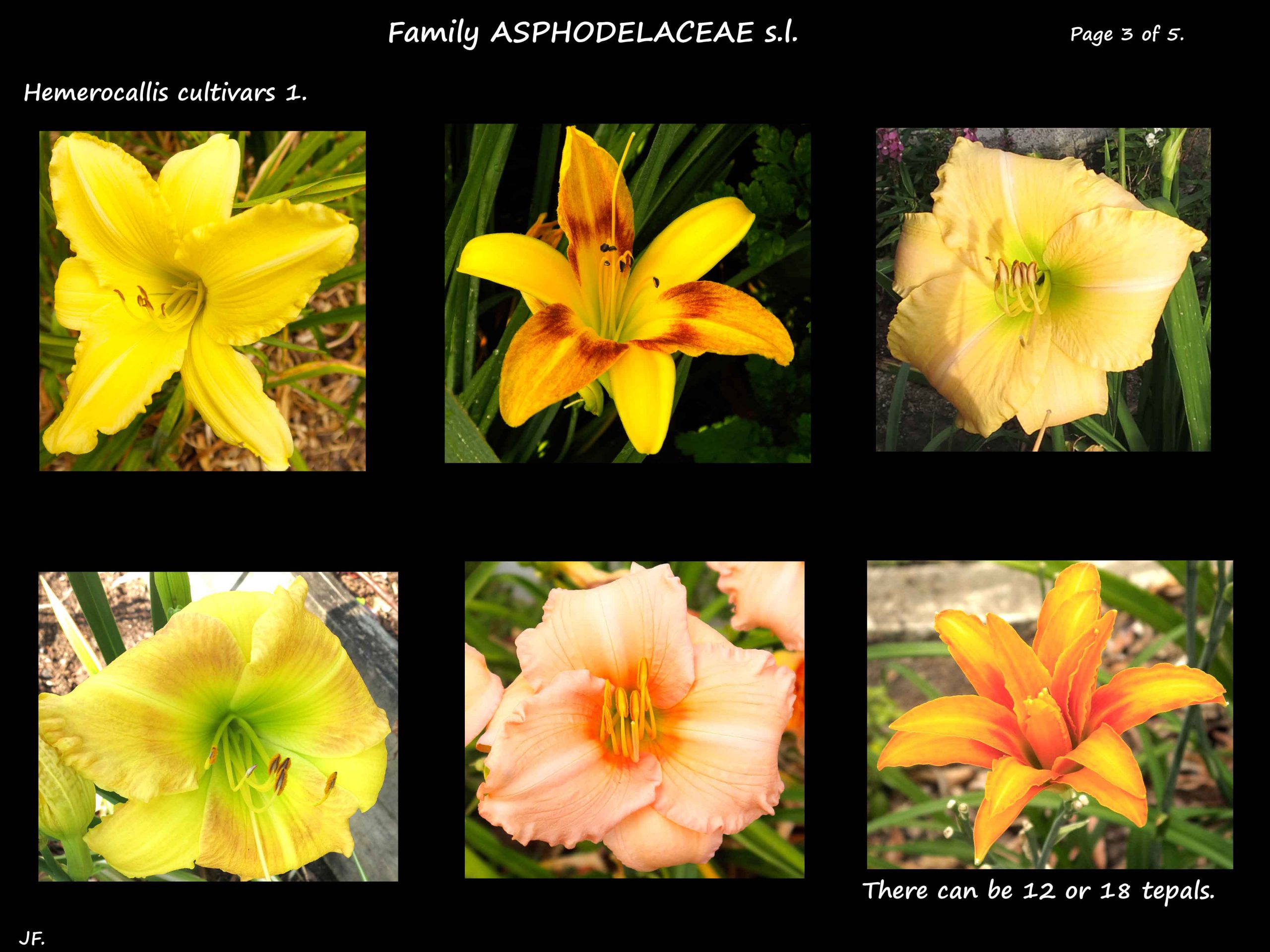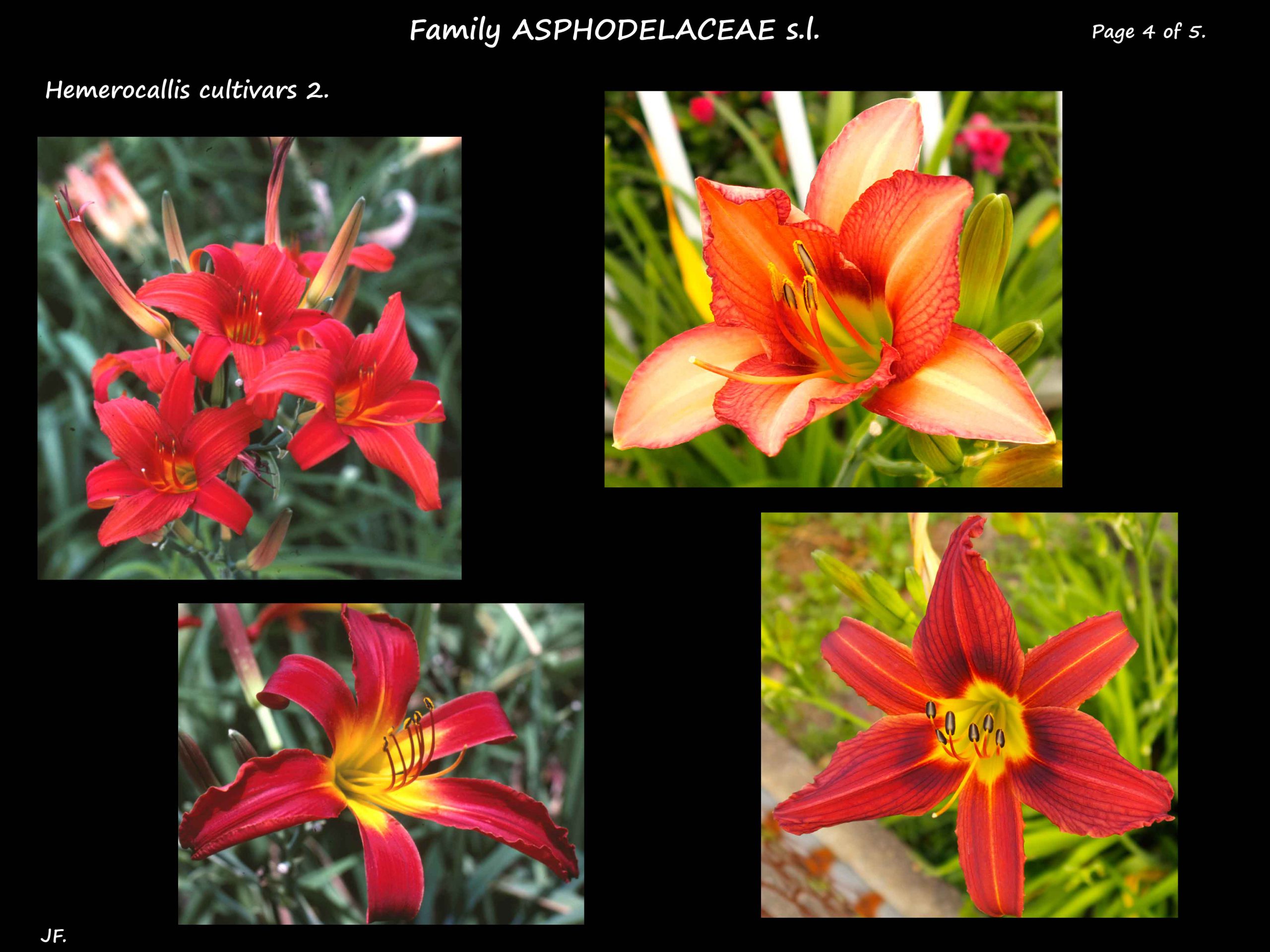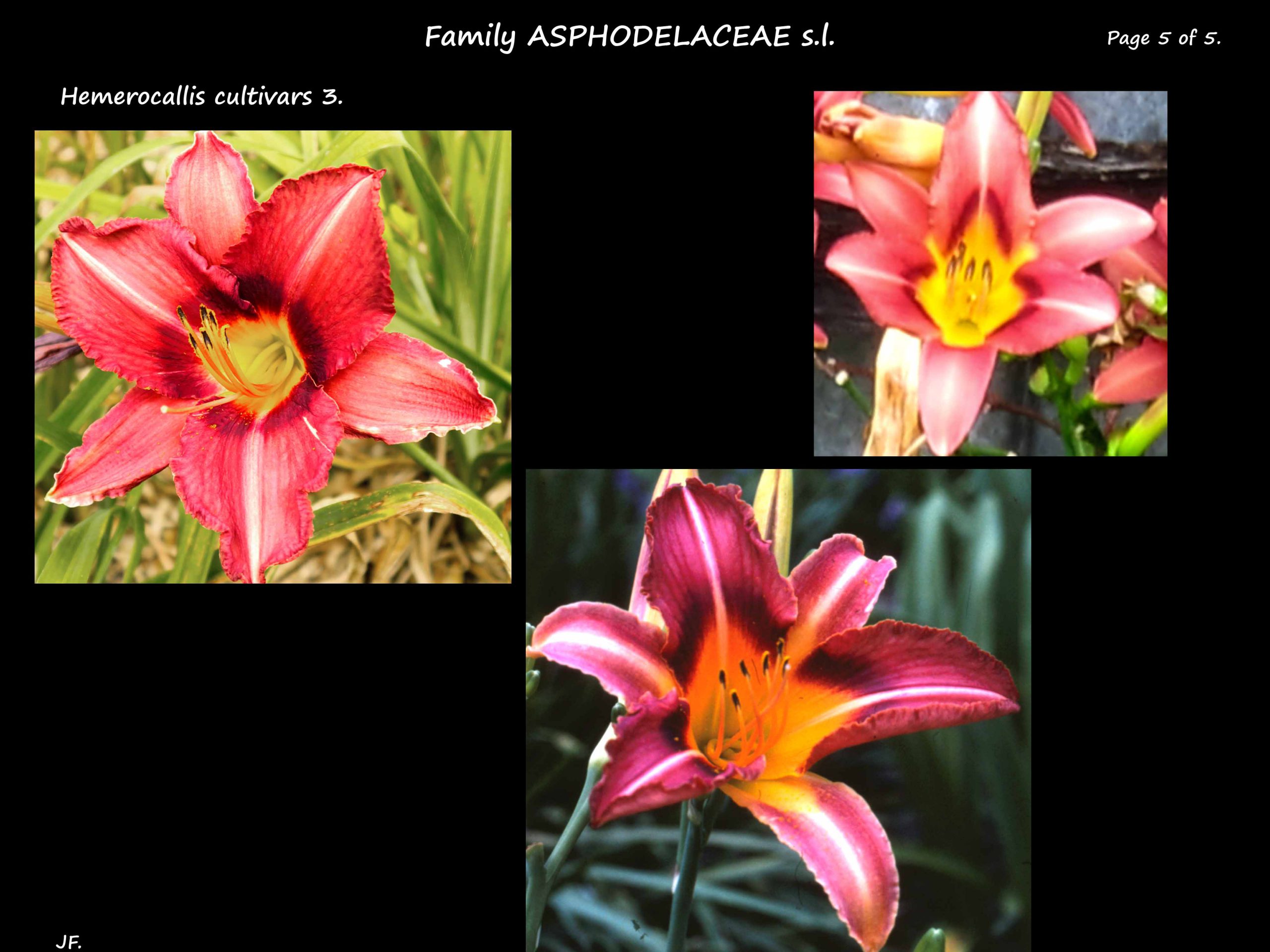Hemerocallis.
Family Asphodelaceae s.l. > Subfamily Hemerocallidoideae.
Despite the name, and their previously being in family Liliaceae, daylilies are not lilies.
True lilies grow from a bulb and the single stem has leaves all the way up.
Daylilies have strap-like, basal leaves growing from thick roots.
There are 15 or 19 species of daylilies, 2 recognised hybrids and over 80,000 cultivars.
Clump forming plants growing from fibrous or thick rhizomatous roots.
Some species have roots that form tubers.
Just above ground is the small white crown from which the leaves and roots grow.
The strap-like, erect or arching green leaves are in compact, opposite ranks.
They can be evergreen or semi-evergreen and 1 m long.
Some cultivars have variegated leaves.
Inflorescences are a scape with the flowers at the top of a leafless stalk.
There are green, leaf-like bracts on the stalk.
A plant can produce 1 to 3 inflorescences per year.
They can be from 4 cm to 2 m long.
Inflorescences may or may not be branched.
There can be 1 to 20 flowers per inflorescence over a period.
Flowers only last a day and some bloom at night.
There are 6 tepals in 2 whorls sometimes called sepals and petals.
The basal parts of the tepals are fused into a long or short tube.
The free parts flare outwards making a funnel-shaped corolla.
Tepals have a midrib that may be a different colour.
The throat is usually a different colour.
There may be nectaries at the base of the inner tepals.
The original daylilies were yellow, orange, pale pink or bronze.
Cultivars now come in almost any colour except pure blue or white.
New colours include bright reds, mauves, greenish, and almost black or white.
Cultivars also include flowers with different sizes, shapes and ruffled tepals.
Each of the 6 stamens has an anther with 2 lobes.
The ovary, of 3 fused carpels, has 3 locules.
The single style, longer than the stamen filaments, has a small, 3-lobed stigma.
The fruit are ribbed capsules that can be round or elliptic.
The 3 chambers hold round or elliptic, black seeds.
Hemerocallis fulva.
The Orange daylily is an original species that has been cultivated for a very long time.
The narrow leaves are up to 90 cm long.
The funnel-shaped flowers are on stalks to 6 mm long.
The top of the corolla is up to 10 cm across.
The orange to yellow tepals are up to 8.5 cm long with the bases fused into a tube.
The tepals have a pale midrib and a wavy tip.
The 6 stamens are up to 7 cm long and the anthers 7 mm.
There is a superior ovary with a style up to 10 cm long.
The fruit are capsules up to 2.5 cm long and 1.5 cm wide with 3 compartments.
J.F.
